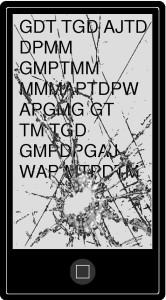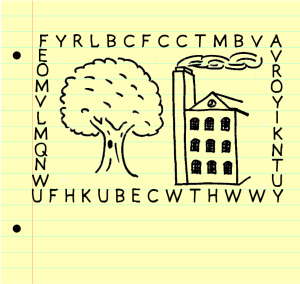The University of Manchester is holding another cryptography competition (as featured in this news post earlier this week). We spoke to Charles Walkden, one of the competition’s organisers, about the project.
Tell us a little about your upcoming competition.
The ‘Alan Turing Cryptography Competition’ runs from January to April 2013. It’s a web-based competition, (see the competition’s website) aimed at school children in the UK in Years 11 (in England and Wales), S4 (Scotland) and Year 12 (in Northern Ireland) and below. It’s most suitable for Years 7 – 11 (or equivalent).
The idea is that groups of up to four pupils form themselves into teams. (Each school can enter multiple teams – we like the idea that teams in the same school are competing against each other!) Teams can register on the competition website above.
The competition runs from 7th January 2013 to 8th April 2013 and follows the adventures of two children – Mike and Ellie – who get involved in an exciting adventure involving a mysterious ancient artefact, the Egyptian Enigma! The story will consist of six chapters, each containing a code that the teams have to solve. The codes get harder as the story progresses!
There are some great prizes as well – sponsored by the flight comparison company SkyScanner. Points are awarded for how fast each team solves each code, and there’s a leaderboard so that you can see how well you’re doing compared to other teams. At the end of the competition, the first, second and third-placed teams on the leaderboard will win £30, £25, and £20 in Amazon vouchers per team member, and their school will get a trophy.
There are other prizes too: the team that first solves each code will win £15 in Amazon vouchers per team member. We’ve also got some random spot prizes: if your team has solved a particular chapter, then you’re in with a chance of winning a spot £10 per team member.
If you’re not at school or not in Year 11 or below, then you can still take part. You can register as a ‘non-competing team’ – you won’t be eligible for any prizes, but you can play along just for fun!
How much of a challenge was writing the code puzzles and supporting material?
Firstly, it’s a team effort to write the competition so I need to give credit to everyone in the School of Mathematics who was involved. The codes and story were written by Andrew Hazel and myself and the website was coded by Kees van Schaik. We’ve also got two excellent administrators – Sebastian and Helen – who look after all the paperwork, send out prizes, liaise with SkyScanner, etc.
 It was great fun thinking up the puzzles and codes. There is so much information on the web about well-known methods of encryption (Caesar ciphers, substitution ciphers, etc) that we made a deliberate attempt to come up with other, more unusual, methods which have a slightly quirky edge to them. Also, as we wanted the competition to be open to as many children as possible, we didn’t want to set anything that would require computer programming to solve it. For example, at one point in the last year’s competition, the children in the story find a broken mobile phone containing a text message that has been sent with predictive texting turned off (so ‘hello’ would become ‘GDJJM’ for example). We had also added a crack to the screen of the phone to obscure some of the letters. At first sight it looks difficult to decipher, but once you see how to solve it you think ‘why didn’t I spot that immediately!’.
It was great fun thinking up the puzzles and codes. There is so much information on the web about well-known methods of encryption (Caesar ciphers, substitution ciphers, etc) that we made a deliberate attempt to come up with other, more unusual, methods which have a slightly quirky edge to them. Also, as we wanted the competition to be open to as many children as possible, we didn’t want to set anything that would require computer programming to solve it. For example, at one point in the last year’s competition, the children in the story find a broken mobile phone containing a text message that has been sent with predictive texting turned off (so ‘hello’ would become ‘GDJJM’ for example). We had also added a crack to the screen of the phone to obscure some of the letters. At first sight it looks difficult to decipher, but once you see how to solve it you think ‘why didn’t I spot that immediately!’.
It’s also important to have the codes as part of a story; without the story, the competition would just be 6 brain-teasers – which we think would be a little dull! Last year, some locations in the story were related to Turing – so we could use this to point out some of Turing’s contributions to modern society. There’s a similar theme this year, highlighting some of the achievements of former scientists, including Turing, from the University of Manchester. Writing the story itself was probably the hardest part – we’re mathematicians not J.K. Rowling! – but it was great fun exercising our creative-writing muscles (even if Andrew and I got some strange looks in the School’s common room when we were discussing narrative structure and character development!).
This isn’t the first cryptography competition you’ve run – how successful was the first one?
We were amazed by how successful it was! We had targeted the competition at schools in the Northwest, but it was open to any school in the UK. Word must have spread pretty fast, as we ended up with teams from Aberdeen to Dorset and from Belfast to Ipswich. By the end of the competition we had over 1800 pupils taking part, spread over about 600 teams – in fact the University’s IT guys noticed a huge spike in internet traffic just before 4pm Mondays, when all the teams were clicking ‘reload’ so that they could be first with the next code to solve!
We’re aiming to get even more people involved this year, so please spread the word!

What inspired you to run these events?
2012 was the centenary of Alan Turing. Turing did many amazing things during his life – he did pioneering work in mathematical logic and the theoretical foundations of computer science, he led the team the cracked the Enigma machine during the 2nd World War, he was one of the first people to use computers as a research tool on which to do calculations in his work on mathematical biology and morphogenesis, etc – and there have been many events during 2012 to celebrate his life.
We wanted to do something that would inspire school children, particularly at KS3/KS4. We wanted to run something that would convince secondary school students that mathematics was about far more than just arithmetic! I’m reminded of the instructions to the Sudoku puzzle in the local newspaper where I live. It says ‘You solve the puzzle with reasoning and logic. There’s no maths involved and no adding up’! We wanted to show students that maths IS about reasoning and logic, and can even be fun!
To what extent do the coding challenges in the competition relate to the work of Alan Turing?
Turing’s method (based on earlier work of Marion Rejewski) for cracking the Enigma machine is not something that can be easily done without the use of computers (or, in Turing’s time, mechanical devices known as ‘Bombes’); we didn’t think it was fair to set codes that required the use of computers to solve. However, the cryptanalysts at Bletchley Park didn’t rely solely on brute-force computation using the Bombes (and other devices for other ciphers) – they also used reasoning, logic and psychology (of the originator or recipient of the message) to reduce the number of keys that needed to be checked, and so speed up the computation. This is something that we could try to capture in the competition.
I’d like to think that Turing would have taken part in the competition if it had run when he was at school (indeed, last year we had several teams from Sherborne School – Turing’s alma mater). It seems that he had a patchy record at school, particularly in mathematics where he was apparently somewhat careless and preferred thinking about more advanced topics than those that were in the syllabus – maybe he just found it all too easy! (You can read extracts of his school reports here). One aim of the competition is to demonstrate to school pupils – from those who find it all too easy to those who struggle and need extra motivation – that there is more to mathematics than what they learn at school, and to inspire pupils of all abilities to take the subject further!
How can people find out more about the competition?
The competition website is here.